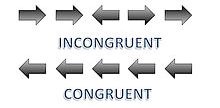|
|
|
|
Thank you for your participation!
|
|
|
 |
Dear Educators,
This summer, while teachers and students are on a "summer break," the U.S. is facing some major challenges. Our challenges as educators and educational leaders seem to be multiplying. Gone are the simple days of the one-room school house where kids walked to schools and teachers simply did they best they could to make sure students learned. Now, we have not only the school and district educational protocol and procedures, but the complexity brought about by instantaneous news, a plethora of curriculum and instructional options, politics and new educational laws and regulations, testing, and the pressure for students to achieve.
Also, front and center for many of us is the horrific amount of violence in local communities and throughout the world.
CEI is continuing to be proactive with our vision to establish nurturing communities where healing is possible. This month in
Wow! we continue with our mission with three articles from summer interns: Amber Nicole Dilger - a music teacher from Wisconsin, Meghan Wenzel- a psychology graduate student at Columbia Teacher's College, and Drew Altizer - an undergraduate student with a double major in psychology and economics. At CEI, we view neuroscience, compassion, caring, and consciousness, as essential 21st Century skills. We encourage you to consider how the ideas Amber Nicole, Meghan, and Drew present can enhance caring and learning in your schools.
|
 |
Rhythm in Your Classroom
By Amber Nicole Dilger, CEI Intern |
 "But I'm not a music teacher."
"But I'm not a music teacher."
Perfect!
Rhythm is an often overlooked way to bring a fun and valuable tool into the classroom of any subject matter. By introducing information to the brain from as many angles as possible, more neural connections are created and strengthened. Rhythm's components of movement and distraction can be two key players in improving learning. There is now a large collection of research that proves what many have suspected all along. Human bodies are meant to move, and learning is enhanced by that movement. Neuroscientist
Wendy A. Suzuki suggests that we "consider how the educational system might be altered if we acknowledge exercise's ability to brighten our mood, decrease stress, and improve our attention span and memory. The growing evidence that exercise improves these key brain functions should encourage schools around the world to increase- not decrease- students' physical activity. Not only would this help students to better absorb everything from history lessons to chemistry experiments, they'd be a lot happier, too."
 Movement. Movement. A
2013 review of studies on the effects of cardiovascular exercise on the human brain shows that exercise benefits learning by priming the molecular processes that help form memory. When the
role of fitness on the brains of preadolescent children was studied in 2015 by Chaddock-Heyman et al., evidence was found that suggests aerobic fitness benefits the both the brain and cognition. Essentially, what happens is that a certain type of protein is created during exercise that seems to play a role in the development and maintenance of healthy neurons. The
exercise-increased proteins also pump up the hippocampus, which is a part of the brain that is responsible for memory and learning.
Distraction. There are two parts of learning: getting things to stick in the brain, and then getting them to come back out (hopefully at the appropriate time). Using distraction as an intentional tool can help with both of these processes. A
study at Brown University in 2014 found that if a task was to be recalled in an environment that had distractions, it was best learned in an environment that had a similar level of distractions. It wasn't necessary that they were the same diversions, just that they were of a similar level.
 Application. Application. Which brings us to multiplication tables, or the periodic table, or the German alphabet. Whatever set of data students are memorizing can be more effectively learned if elements of movement and appropriate distraction are applied. One very fun way to do this is with rhythm. (Please note: if you're someone who thinks "I have no rhythm!"
follow this link for a basic tutorial video to help you find the beat and work with a metronome.)
With students out of their chairs, start with a slow beat. Tapping or marching is an easy way to have everyone join together in the activity. A metronome is very helpful for keeping a steady tempo, and keeping track of the metronome number (the beats per minute, or BPM) can allow progress to be charted. Demonstrate the recitation goal to the students; for example, decide if each word comes on a beat or every two beats. Repeat this activity over many days and experiment with the speed. When it seems all students have progressed to a fast tempo, do some slow motion repetitions and check that the information can be recalled under varying circumstances.
Also, adjusting movements with the tempo can add additional useful elements to the learning experience. When all students are comfortable with one aspect, such as marching, add another layer. Possibilities include snapping, clapping, gesturing with different parts of the body (elbows, heels, knees, shoulders). The sillier the combination, the better the facts will stick in the brain.
Summary. Rhythm is a valuable tool for all classrooms. By incorporating movement and relevant distraction into lesson plans, the brain can become both healthier and more able to embed and recall information. It is important to remember to balance this rhythm-movement activity with stationary and quiet practice to allow learning to take place in yet another context. The goal of introducing information to the brain in as many different ways as possible will keep all students actively engaged throughout the learning process.
|
 |
Learning to Control One's Impulses
By Meghan Wenzel, CEI Intern |
|
Raising one's hand in class before answering a question, waiting for one's turn to speak during a conversation, ignoring distractions while working on homework, and reading the directions before starting an assignment are all daily activities at school (South County Child & Family Consultants, 2014).
They are also examples of activities that require response inhibition, or the suppression of actions that are inappropriate in a certain context and interfere with goal-directed behavior (Mostofsky & Simmonds, 2008). In other words, it is important to be able to think before you act and control your impulses and responses to distractions around you.
Avoiding Chaos. Think about it. Without response inhibition, our world could be rather chaotic. Learning to wait one's turn, being respectful of others when they are speaking, and thinking before we leap are all behaviors that help us function within our communities. They also help us make wiser decisions. There are certainly a multitude of times when we make better choices because we have paused, reflected on our response options, and then acted.
If a student is easily distracted by interruptions, does not work well in teams, or struggles in the classroom environment, he or she may benefit from coaching, instruction, and practicing response inhibition. Improving this component of executive function can help students better control and mitigate their responses. It also increases their attention, ability to follow directions, and ability to play by the rules, which all enhance their ability to learn and succeed in school and life.
Traditional Instructional Approaches to Build Capacity
Traditionally teachers have used signals or prompts such as "my turn, your turn." Or we have times for reflection and writing down thoughts prior to sharing ideas. Sometimes we cue students to "read over the materials and write down their questions" before teaming students with a peer to problem solve. By building in quiet times and opportunities for reflection as well as prompts for students, we help them gradually expand the length of time they remain task.
The Role Neuroscience Can Play
The Amygdala. Recent research has shown that various centers in the brain may interfere with response inhibition. If a student feels threatened or stress, the amygdala may jump in with the message "Escape Now." If the student can't tolerate ambiguity or is perplexed with an assignment, the student may have learned a variety of tactics to switch attention away from the task at hand.
The Prefrontal Cortex. The prefrontal cortex is involved in controlling many cognitive processes including attention and task shifting. It is involved in coordinating task-related behavior, and if an assignment is ambiguous or perplexing, students might switch their attention to other tasks that seem more goal-relevant (Rossi, Pessoa, Desimone, & Ungerleider, 2009).
Applying Neuroscience in Classrooms. While a variety of programs based on neuroscience are available to take students through a series of exercises to increase student engagement, CEI has focused most of our attention on ACTIVATE because of the research supporting its use (C8 Sciences, 2015). ACTIVATE's carefully designed cognitive software includes six interactive and engaging games, three of which train response inhibition. In these games, students must identify and focus on key pieces of information while ignoring distractors and controlling impulses. As the rules within the games shift, students have to update their strategies and inhibit habituated responses.
Incorporating Physical Activities. In addition to these evidence-based computer games, ACTIVATE also includes a physical activity component. Students participate in individual and team activities, including jumping rope, balancing, volleyball, basketball, martial arts, soccer, juggling, and catching and throwing. Juggling requires physical coordination and sustained mental attention. Students must ignore distractions and focus on keeping the balls in the air and moving. Martial arts emphasize self-control and discipline, prompting students to control their impulses and reactions. Team sports such as volleyball, basketball, and soccer all require students to work together, listen to each other before speaking, and ignore taunts from the other team and distractions from the surrounding environment.
 Flanker Tests.
Flanker Tests. With ACTIVATE, it is recommended that students complete 20-30 minutes of both the computer and physical exercises three to five times a week. To assess cognitive growth, ACTIVATE incorporates three assessments based on the NIH Toolbox: the Flanker Test, the Go/No-Go Test, and the Working Memory Test. The Flanker Test in particular focuses on evaluating inhibitory control and attention. Students see five arrows in a row, all of which are pointing to the right or left. During some trials the middle stimulus is pointing in the same direction as the "flankers" (congruent) and some trials it is pointing in the opposite direction (incongruent). Scoring is based on a combination of accuracy and reaction time, and the test takes approximately three minutes to administer (National Institutes of Health, 2102).
Instead of Following Our First Impulse, Sometimes it Pays to Wait
Response inhibition is "a fundamental skill that enables all other executive skills to develop. If a child cannot control his or her impulses, he or she can not initiate, sustain attention, plan, organize, or problem solve effectively" (Dawson & Guare, 2009). When we get angry or upset, our first impulse is often to react rashly. Instead of giving into this instinctive response, we need to rely on rational thinking to keep cool and reason through the situation. Response inhibition then helps us control our actions, thoughts, and emotions to ignore inappropriate responses and select the best course of action.
While teachers can do much to promote response inhibition through how we arrange our instructions and the learning environment, today we have available tools based on our recent understanding of neuroscience. We recommend that teachers and principals ensure that these tools are an integral part of their 21st Century Learning Toolkit.
References
Dawson, P. & Guare, R. (2009). Smart but scattered: The revolutionary "executive skills" approach to helping kids reach their potential. New York: The Guilford Press.
Mostofsky, S. & Simmonds, D. (2008). Response inhibition and response selection: two sides of the same coin.
Journal of Cognitive Neuroscience, 20(5), 751-761.
Rossi, A. F., Pessoa, L., Desimone, R., & Ungerleider, L. G. (2009). The prefrontal cortex and the executive control of attention.
Experimental Brain Research, 192(3), 489-497.
|
 |
Resiliency
By Drew Altizer, CEI Intern |
|
We all face some sort of adversity in our lives. Some people are dealt more than their fair share. Yet we see that even in the most unforgiving of upbringings, some still make it out of the mold and find success in a better life. You may think we could find common characteristics or personality traits among the successful, especially those who started with nothing. In fact there are commonalities in these people and a longitudinal study done in Kauai attempted to find just what it was.
 Kauai, being the westernmost island of Hawai'i, is filled with tropical resorts and sports a laid back lifestyle that attracts many vacationers. In 1955 at the time the study began, however, Hawai'i hadn't become a state yet and many of people still lived in poverty. The Kauai Longitudinal Study, conducted by Emmy Werner of the University of California, Davis and Ruth Smith, involved 698 children all born in 1955, around thirty percent of whom were deemed at-risk at birth. This meant anything from birth complications to family troubles like parental divorce and mothers with less than eight grades of education. Many of the children subjected to these risk factors ended up with learning, behavior, or mental health problems before the age of 18. A third of this group, however, ended up reaching high levels of achievement in education, careers and life in general.
Kauai, being the westernmost island of Hawai'i, is filled with tropical resorts and sports a laid back lifestyle that attracts many vacationers. In 1955 at the time the study began, however, Hawai'i hadn't become a state yet and many of people still lived in poverty. The Kauai Longitudinal Study, conducted by Emmy Werner of the University of California, Davis and Ruth Smith, involved 698 children all born in 1955, around thirty percent of whom were deemed at-risk at birth. This meant anything from birth complications to family troubles like parental divorce and mothers with less than eight grades of education. Many of the children subjected to these risk factors ended up with learning, behavior, or mental health problems before the age of 18. A third of this group, however, ended up reaching high levels of achievement in education, careers and life in general.
Werner and colleagues found that over the 40 years of the study, participants who beat the odds consistently displayed an ability to gain the positive attention of others, especially caregivers. As babies this meant they were more affectionate, cuddly and easier to parent. As they got older, this translated to higher test scores on problem solving tasks and being willing to help others. A childhood like this, despite the socioeconomic circumstances, seemed to culminate into a strong sense of self belief by late adolescence.
 One Close Relationship with an Adult. Having a close relationship with at least one competent and compassionate person from very early on also was shown to increase a child's odds of success. In addition, children who had other role models that they could seek out in times of crisis, like elders or teachers, gave them a much better chance to succeed. One Close Relationship with an Adult. Having a close relationship with at least one competent and compassionate person from very early on also was shown to increase a child's odds of success. In addition, children who had other role models that they could seek out in times of crisis, like elders or teachers, gave them a much better chance to succeed.
There's so much we can carry over from this study to our education systems. Creating the most resilient children is a multi-faceted effort involving not only the child but the child's family and community. If teachers are serious about helping every student succeed, especially when it comes to including those in high risk situations, they have an obligation to employ the findings of this study into their classrooms. This goes beyond just teaching children how to positively interact with each other, help each other, and problem solve, and includes providing emotional support for those that may not receive it at home. The truly great teachers out there are not known for their curricula but instead for how caring and committed they are to their students.
 Our Solution. The Center for Educational Improvement strives to hold teachers and administrators accountable to these high standards. We do this by using the rubric, where you can evaluate many aspects of your school's effectiveness on a four point scale from emerging to exemplary. The rubric, developed by the CEI and Thrivist, includes questions about creating a sense of compassion in the classroom and others that examine whether or not a school is teaching children how to effectively communicate in a positive way. It also has questions that specifically ask if kids are being taught the value of grit and resiliency. The rubric is the product of over five years of research and includes references from over 100 sources. Thrivist, which operates in 1000 communities, created computer software with ClassGather to present and operate the rubric in an intuitive way. Our Solution. The Center for Educational Improvement strives to hold teachers and administrators accountable to these high standards. We do this by using the rubric, where you can evaluate many aspects of your school's effectiveness on a four point scale from emerging to exemplary. The rubric, developed by the CEI and Thrivist, includes questions about creating a sense of compassion in the classroom and others that examine whether or not a school is teaching children how to effectively communicate in a positive way. It also has questions that specifically ask if kids are being taught the value of grit and resiliency. The rubric is the product of over five years of research and includes references from over 100 sources. Thrivist, which operates in 1000 communities, created computer software with ClassGather to present and operate the rubric in an intuitive way.
|
|
|
Communities, Violence, and Response Inhibition
Years ago I read a book,
The Different Drum: Community Making and Peace by M. Scott Peck. Peck is probably best known for the
Road Less Traveled. In the
Different Drum, Peck discusses community making- in these days of violence, an important 21st Century skill. Whether it being helping individuals learn to constrain their impulsivity and be more reflective, or building individual resiliency, we have tools such as music and neuroscience that may lighten our instructional load. We urge educators to tune into the rhythm and flow of your community, to engage in community building, and to be an integral part of the solutions that are so desperately needed today. We may feel that we "don't have time" for these activities. There may be a tendency to leaving this to others. Yet, taking critical time right now for this community building may ultimately be not only a time-saver, but may be life-altering for us, our schools, our students, and our communities.
Sincerely,
Christine Mason
Center for Educational Improvement |
|
|